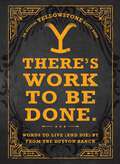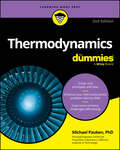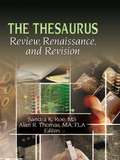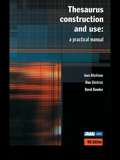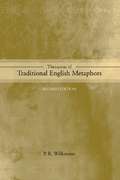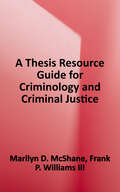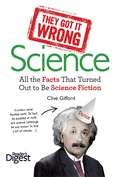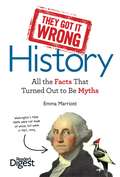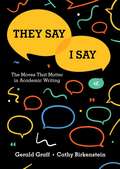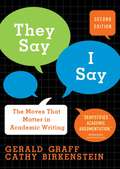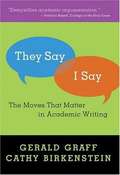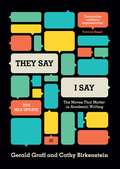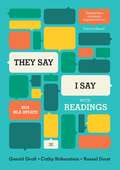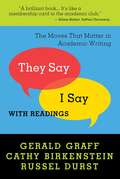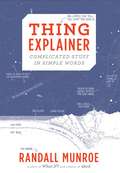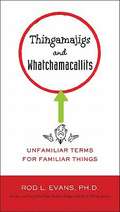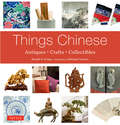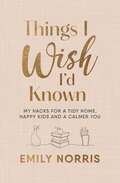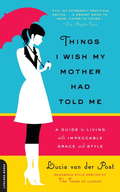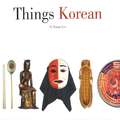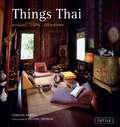- Table View
- List View
There's Work to Be Done.: Words to Live (and Die) By from the Dutton Ranch
by Adams MediaFor the millions of Yellowstone fans, the official quote book There&’s Work to Be Done. captures the advice they live by, the exchanges they remember, and the lines they love to recite.&“There&’s work to be done.&” —Rip Wheeler, Season 1, Episode 6, &“The Remembering&” The characters of Yellowstone don&’t mince words. And that&’s just the way fans like it. From John Dutton&’s sage advice to Beth&’s pointed barbs, the show&’s iconic lines and exchanges live on long after each episode ends. There&’s Work to Be Done. captures those famous—and infamous—quotes in a collection that&’ll brand any Yellowstone fan as a true diehard. With more than 75 quotes and stills from Seasons 1 through 5, they&’ll be able to relive and recite lines such as: -&“You are the trailer park. I am the tornado.&” —Beth Dutton, Season 3, Episode 5, &“Cowboys and Dreamers&” -&“You find out real fast who&’s willing to ride for the brand when they learn they gotta wear it.&” —John Dutton, Season 5, Episode 8, &“A Knife and No Coin&” -&“My tomorrows are all yours.&” —Rip Wheeler, Season 3, Episode 4, &“Going Back to Cali&” -&“Gonna go do some cowboy sh*t now.&” —Walker, Season 5, Episode 7, &“The Dream Is Not Me&” Time to get the work done and ride for the brand with this official Yellowstone quote book.
Thermal Remote Sensing of Active Volcanoes
by Andrew HarrisEncapsulating over one hundred years of research developments, this book is a comprehensive manual for measurements of Earth surface temperatures and heat fluxes, enabling better detection and measurement of volcanic activity. With a particular focus on volcanic hot spots, the book explores methodologies and principles used with satellite-, radiometer- and thermal-camera data. It presents traditional applications using satellite and ground based sensors as well as modern applications that have evolved for use with hand-held thermal cameras and is fully illustrated with case studies, databases and worked examples. Chapter topics include techniques for thermal mixture modelling and heat flux derivation, and methods for data collection, mapping and time-series generation. Appendices and online supplements present additional specific notes on areas of sensor application and data processing, supported by an extensive reference list. This book is an invaluable resource for academic researchers and graduate students in thermal remote sensing, volcanology, geophysics and planetary studies.
Thermodynamics For Dummies
by Michael PaukenThe thermodynamics knowledge you need to succeed in class—and in your career Thermodynamics For Dummies, 2nd Edition covers the topics found in a typical undergraduate introductory thermodynamic course (which is an essential course to nearly all engineering degree programs). It also brings the subject to life with exciting content on where (and how!) thermodynamics is being used today (spoiler alert: everywhere!). You'll grasp the basics of how heat and energy interact, thermodynamic properties of reactions and mixtures, and how thermodynamic cycles are used to make things go. This useful guide also covers renewable energy systems, new refrigerant technology, and a more diverse perspective on the history of the field. Within, you'll: Get clear explanations of the laws of thermodynamics, thermodynamic cycles, and beyond Read about real-world examples to help you connect with the content Practice solving thermodynamic problems to internalize what you've learned For students looking for resources to demystify thermodynamics, Thermodynamics For Dummies, 2nd Edition is the perfect choice. Become thermodynamically savvy with this accessible guide!
The Thesaurus: Review, Renaissance, and Revision
by Sandra K. Roe Alan R ThomasUse this single source to uncover the origin and development of the thesaurus! The Thesaurus: Review, Renaissance, and Revision examines the historical development of the thesaurus and the standards employed for thesaurus construction. This book provides both the history of thesauri and tutorials on usage to increase your understanding of thesaurus creation, use, and evaluation. This reference tool offers essential information on thesauri in the digital environment, including Web sites, databases, and software. For 50 years, the thesaurus has been a core reference book; The Thesaurus: Review, Renaissance, and Revision celebrates this history and speculates on the future of vocabulary-switching tools. This book will familiarize you with contemporary and emerging functions of thesauri, including international and multilingual developments. The Thesaurus: Review, Renaissance, and Revision provides information and library professionals-including indexers, abstractors, subject catalogers, classifiers, and reference librarians-a historical overview of the thesaurus and its past as well as recent developments. This book also gives patrons, readers, and researchers more effective techniques in vocabulary management and offers insight on how thesauri are devised and compiled. This book addresses: changing definitions, characteristics, functions, and applications of thesauri the value of standards, evaluation, use and review of software, and role and work of consultants during thesauri construction and maintenance multicultural issues that affect thesauri creation, such as mapping and interoperability education and training The Thesaurus: Review, Renaissance, and Revision also provides you with extensive bibliographies related to issues and problems in thesaurus construction and design, such as developing standards in support of electronic thesauri.
Thesaurus Construction and Use: A Practical Manual
by Jean Aitchison David Bawden Alan GilchristA practical guide to the construction of thesauri for use in information retrieval, written by leading experts in the field. Includes: planning and design; vocabulary control; specificity and compound terms; structure and relationships; auxiliary retrieval devices; multilingual thesauri; AAT Compound Term Rules. The US ANSI/NISO Z39.19 Thesaurus construction standard is also covered.
Thesaurus Linguae Graecae: A Bibliographic Guide to the Canon of Greek Authors and Works
by Maria C. PanteliaThe Thesaurus Linguae Graecae: A Bibliographic Guide to the Canon of Greek Authors and Works (TLG®) is a comprehensive catalog of the authors and works that have survived in Greek from antiquity (eighth century BCE) to the present era and have been collected and digitized by the TLG® in its fifty-year history. It provides biographical information about each author, such as dates, place of birth, and literary activity, as well as a list of their extant works and print publications. This volume encompasses more than 4,400 authors and 17,000 individual works. It offers a concise and authoritative literary history of Greek literature and is an indispensable reference source for its study.
Thesaurus of Traditional English Metaphors
by P.R. WilkinsonThis fascinating collection of traditional metaphors and figures of speech, groups expressions according to theme. The second edition includes over 1,500 new entries, more information on first known usages, a new introduction and two expanded indexes. It will appeal to those interested in cultural history and the English language.
A Thesis Resource Guide for Criminology and Criminal Justice
by Marilyn D. McShane Frank P. Williams IIIThis handbook is a comprehensive guide to developing and writing graduate level research. It takes the reader on a step-by-step journey through the entire thesis process from initial ideas to a completed product or even a published article. Examples from actual student theses provide concrete illustrations of each step and function as a starting point for one's own project. Tips for organizing tasks and completing them on time help orient readers to the research process and give them confidence to achieve their own research goals. Unique step-by-step guide for successfully completing the thesis projectfrom development through defense. Examples from theses done by students provide concrete illustrations and a starting point for ideas and discussion. Broad range of quantitative and qualitative thesis methodologies gives readers an overview of the basic tools of the research process. Tips for organizing tasks and completing the project on time. Those looking for assistance with writing a thesis.
They Got It Wrong: Science
by Graeme DonaldThis book is the perfect gift for anyone with an interest in our scientific history. It exposes the theories that were once widely regarded as facts but have since been proven to be complete science fiction. From such seemingly crazy ideas as the body being composed of only four things--black and yellow bile, blood, and phlegm--to the discovery of dinosaur bones being accepted as the bones of giants killed in the great flood from Biblical times. They Got It Wrong: Science tells the fascinating story behind 50 erroneous scientific theories and gives incredible perspective on how the way we view the workings of the world has evolved throughout history.
They Got It Wrong: History
by Emma MarriottThey Got It Wrong: History exposes historical fallacies around the globe from the Roman Empire to World War II. There are countless twisted, sanitized tales that have become entrenched in popular belief but are really now more than warped reflections of the truth--or flat out lies. Author Emma Marriot shines a light on these murky corners of history to separate out the facts from shadowy fictions and illuminate how and why these falsehoods got passed around as truths.
They Say / I Say: The Moves That Matter In Academic Writing (Fourth Edition)
by Cathy Birkenstein Gerald GraffThis book identifies the key rhetorical moves in academic writing. It shows students how to frame their arguments as a response to what others have said and provides templates to help them start making the moves. The fourth edition features many NEW examples from academic writing, a NEW chapter on Entering Online Discussions, and a thoroughly updated chapter on Writing in the Social Sciences. Finally, two NEW readings provide current examples of the rhetorical moves in action.
They Say / I Say: The Moves That Matter in Academic Writing (2nd edition)
by Gerald Graff Cathy BirkensteinThey Say / I Say has essentially defined academic writing, identifying its key rhetorical moves, the most important of which is to summarize what others have said to set up one's own argument.
They Say / I Say: The Moves That Matter in Academic Writing
by Gerald Graff Cathy Birkenstein"They Say / I Say" shows that writing well means mastering some key rhetorical moves, the most important of which involves summarizing what others have said ("they say") to set up one's own argument ("I say"). In addition to explaining the basic moves, this book provides writing templates that show students explicitly how to make these moves in their own writing.
They Say / I Say: The Moves That Matter In Academic Writing 3rd Edition
by Gerald Graff Cathy Birkenstein"They Say / I Say" identifies the key rhetorical moves in academic writing, showing students how to frame their arguments in the larger context of what others have said and providing templates to help them make those moves. And, because these moves are central across all disciplines, the book includes chapters on writing in the sciences, writing in the social sciences, and--new to this edition--writing about literature.
"They Say / I Say": The Moves That Matter in Academic Writing, with Readings
by Gerald Graff Cathy Birkenstein Russel Durst"They Say / I Say" identifies the key rhetorical moves in academic writing, showing students how to frame their arguments in the larger context of what others have said and providing templates to help them make those moves. And, because these moves are central across all disciplines, the book includes chapters on writing in the sciences, writing in the social sciences, and--new to this edition--writing about literature.
They Say / I Say: The Moves That Matter in Academic Writing, with Readings
by Gerald Graff Cathy Birkenstein Russel DurstIn addition to explaining the basic moves, this book provides writing templates that show students explicitly how to make these moves in their own writing. Now available in two versions, with and without an anthology of 32 readings.
They Went That-a-way ...
by Malcolm ForbesHow the famous, the infamous, and the great have died. Here are the exits made by 175 people famous sometime during the past 3000 years.
Thing Explainer
by Randall MunroeHave you ever tried to learn more about some incredible thing, only to be frustrated by incomprehensible jargon? Randall Munroe is here to help. In Thing Explainer, he uses line drawings and only the thousand (or, rather, "ten hundred") most common words to provide simple explanations for some of the most interesting stuff there is, including:food-heating radio boxes (microwaves)tall roads (bridges)computer buildings (datacenters)the shared space house (the International Space Station)the other worlds around the sun (the solar system)the big flat rocks we live on (tectonic plates)the pieces everything is made of (the periodic table)planes with turning wings (helicopters)boxes that make clothes smell better (washers and dryers)the bags of stuff inside you (cells) How do these things work? Where do they come from? What would life be like without them? And what would happen if we opened them up, heated them up, cooled them down, pointed them in a different direction, or pressed this button? In Thing Explainer, Munroe gives us the answers to these questions and so many more. Funny, interesting, and always understandable, this book is for anyone--age 5 to 105--who has ever wondered how things work, and why.
Thingamajigs and Whatchamacallits
by Evans Rod L.Have you been guilty of catachresis* at work? Have you defenestrated* your dictionary in frustration? Do you have phloem bundles* stuck in your diastema*? Scratching your occiput* now? Rod L. Evans's Thingamajigs and Whatchamacallits will help take the mystery out of some of our most obscure words. Containing hundreds of words from agitron (the phenomenon of wiggly lines in comic strips indicating that something is shaking) to zarf (the holder for a paper cone coffee cup), this lively reference will enable you to easily locate your thingamajig or whatchamacallit, be it animal, vegetable, mineral, or punctuation mark. Leave no linguistic oddity unexamined-your brain will thank you. *catachresis: strained, paradoxical, or incorrect use of a word; *defenestrate: to throw out a window; *phloem bundles: stringy bits between the skin and the edible parts of a banana; *diastema: the gap between teeth in a jaw; *occiput: the back part of the head or skull .
Things Chinese
by Michael Freeman Ronald G. KnappA source of fascination to the West, China's renowned art objects and traditional manufactured products have long been sought by collectors. Things Chinese presents sixty distinctive items that are typical of Chinese culture and together present a window onto the people, the history and the society of the world's largest nation.Featuring descriptions and full-color photographs, the history, cultural significance and customs surrounding these objects and their importance becomes clear. Items covered include:Bamboo furnitureIvory carvingSnuff BottleMooncake mouldsMusical InstrumentsMahjong setsFengshui compasses
Things I Wish I’d Known: My hacks for a tidy home, happy kids and a calmer you
by Emily Norris'Queen of the mothering hack. Emily Norris delivers ingenious ideas to make life a little bit easier!’ – Giovanna Fletcher, bestselling author and podcaster'Genius hacks to save time and bring a little more joy' – Anna Mathur, Psychotherapist and bestselling author'Packed with tips and ideas that make mum life *just* a little easier!' – Harriet Shearsmith, @tobyandrooI became obsessed with mum hacks when a friend showed me a game-changing tip during my baby days - that baby vests can be pulled down (not up) in the event of an explosive poo. I couldn't believe I had been a mum for so long and not known! Things I Wish I'd Known will bring you hundreds of quick and clever solutions, just like this, all to make the parenting juggle easier.You'll find my favourite hacks and habits, as well as dozens of new ones, all designed to give your day-to-day a lift. From cleaning hacks that leave your home sparkling in no time, laundry tricks that save you money, and simple tweaks to night-time routines which transform everyone's sleep, I'll show you how to hack every aspect of home-life so you feel less stress and more joy!Emily x
Things I Wish My Mother Had Told Me: A Guide to Living with Impeccable Grace and Style
by Lucia van der PostFrom one of BritainOCOs most renowned style arbiters, an essential handbook for women everywhere on how elegance and glamour can enhance every aspect of life"
Things Korean
by John Holstein O-Young LeeThings Korean is a useful guide to traditional life in Korea, presented in an accessible and attractive format. O-Young Lee, former Korean Minister of Culture gives us a survey of native objects from Korea, from totems(Changsung) to hair-pins(binyo), crock pots(Changdokdae) to temple bells(Jong), scissors(Kawi) to graves(mudon) explaining their significance and place in everyday Korean life.Each item in the book is listed under its English and Korean name; a glossary is provided to further assist the reader. Lavishly illustrated with more than 100 color illustrations, Things Korean is a magnificent celebration of Korean culture.
Things Korean
by O-Young Lee John HolsteinThings Korean is a useful guide to traditional life in Korea, presented in an accessible and attractive format. O-Young Lee, former Korean Minister of Culture gives us a survey of native objects from Korea, from totems(Changsung) to hair-pins(binyo), crock pots(Changdokdae) to temple bells(Jong), scissors(Kawi) to graves(mudon) explaining their significance and place in everyday Korean life.Each item in the book is listed under its English and Korean name; a glossary is provided to further assist the reader. Lavishly illustrated with more than 100 color illustrations, Things Korean is a magnificent celebration of Korean culture.
Things Thai: Antiques, Crafts, Collectibles
by Michael Freeman Tanistha DansilpThings Thai presents over 60 different items from Thailand along with extensive cultural and historical background information.Each is a collectible in its own right, and has some cultural relevance or a story to tell. <P><P>Each object, be it a work of art, an emblem or something more everyday, represents an aspect of Thai life. Some items are devotional objects inspired by Theravada Buddhism, others are representative of the strong crafts tradition in the country; some have distinctive Thai design motifs, such as the kanok flame and vegetal motifs, others are simply pieces of clothing or jewelry-but all have a distinct bearing on Thai customs and culture.Each item is photographed separately and detailed text explains its historical importance and cultural significance.
